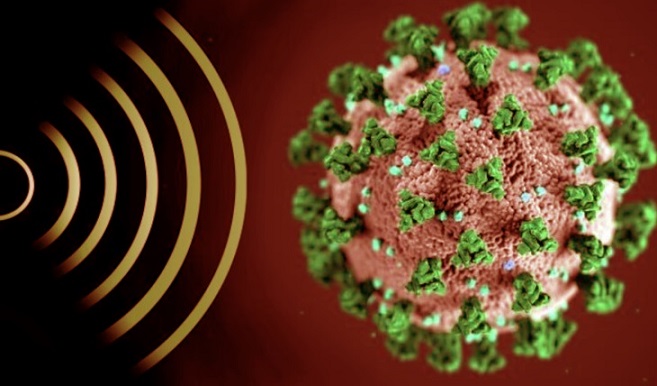Italian And American Scientists Explore Microwave Technology to Fight Against Airborne H5N1 Avian Flu Virus
Nikhil Prasad Fact checked by:Thailand Medical News Team Jan 16, 2025 8 months, 2 days, 18 hours ago
Medical News: A team of scientists from Elettronica S.p.A.-Italy, University of Udine-Italy, University of Pisa-Italy, and the University of California, Berkeley have delved into a novel solution to combat the airborne transmission of the highly pathogenic avian influenza A(H5N1). This dangerous virus threatens global health with its ability to spread across species and cause severe infections in humans.
 Italian And American Scientists Explore Microwave Technology to Fight Against Airborne H5N1 Avian Flu Virus
The Deadly Threat of A(H5N1) Virus
Italian And American Scientists Explore Microwave Technology to Fight Against Airborne H5N1 Avian Flu Virus
The Deadly Threat of A(H5N1) Virus
The A(H5N1) virus, first identified in 1996 in China, has since caused significant outbreaks in poultry and sporadic infections in humans. With a case fatality rate of around 50%, it remains a pressing concern for global health. Unlike other influenza viruses, A(H5N1) predominantly affects the alveoli in the lungs, leading to severe pneumonia, acute respiratory distress syndrome, and, in many cases, death. The virus spreads mainly through contact with infected poultry or contaminated environments, putting agricultural workers and veterinarians at heightened risk.
How Microwave Technology Helps
This
Medical News report introduces an innovative method that uses selected microwave radiation frequencies to inactivate airborne A(H5N1). The researchers focused on optimizing the frequency band and exposure time to maximize viral inactivation while maintaining safety.
Study Objectives and Methods
-The study had two primary objectives: identifying the most effective microwave frequency band and determining the optimal exposure duration for viral inactivation.
-Propagation and Aerosolization of the Virus: The virus was grown in a controlled laboratory environment and aerosolized to simulate real-world conditions of transmission. This process ensured that experiments closely resembled natural scenarios where the virus spreads through the air.
-Microwave Exposure: Using a custom-designed radio-frequency generator, aerosolized samples were exposed to various microwave frequency bands, ranging from 8 to 16 GHz. The researchers carefully measured viral titers before and after exposure to assess the inactivation effect.
Key Findings
-Optimal Frequency Band
Among the tested bands, the 11–13 GHz range was the most effective, achieving an 89% reduction in viral titer. Within this band, the 11–12 GHz sub-range showed peak efficacy. Lower frequency bands, such as 8–10 GHz, also performed well but were slightly less effective. Higher frequencies (above 13 GHz) showed little to no impact on the virus.
-Time-Dependent Effectiveness
Further experiments within the 8–12 GHz frequency band revealed a clear relationship between exposure durati
on and viral inactivation. A 5-minute exposure reduced viral titers by 94%, while 3-minute and 1-minute exposures achieved reductions of 58% and 48%, respectively. These findings highlight that longer exposure times significantly enhance the efficacy of microwave treatment.
Implications and Real-World Applications
The study underscores the potential of microwave emitters as a non-chemical disinfection method in high-risk environments like poultry farms, veterinary clinics, and processing facilities. By targeting airborne pathogens in real-time, this approach could reduce the risk of outbreaks and protect both animal and human health.
Study Limitations
While the findings are promising, the researchers noted certain limitations. Environmental factors like humidity and organic matter could influence effectiveness. Additionally, field distribution within the experimental chamber was not entirely uniform, which might affect scalability in real-world applications.
Conclusion
The research demonstrates that microwave technology is a powerful tool for combating airborne A(H5N1). The study identified the 8–12 GHz frequency band as optimal for viral inactivation, with a 5-minute exposure yielding the best results. These findings open the door to practical, scalable solutions for mitigating the spread of not only A(H5N1) but potentially other airborne viruses. As the world braces for emerging infectious threats, such innovative approaches offer hope for enhanced preparedness and response.
The study findings were published in the peer-reviewed journal: Scientific Reports.
https://link.springer.com/article/10.1038/s41598-025-85376-6
For the latest H5N1 News, keep on logging to Thailand
Medical News.
Read Also:
https://www.thailandmedical.news/news/u-s-nih-study-uncovers-why-most-current-h5n1-infections-are-not-as-severe-as-past-infections
https://www.thailandmedical.news/news/german-scientists-warn-that-h5n1-is-mutating-to-develop-resistance-to-a-human-protein-viral-suppressor-called-mxa
https://www.thailandmedical.news/articles/h5n1-avian-flu
